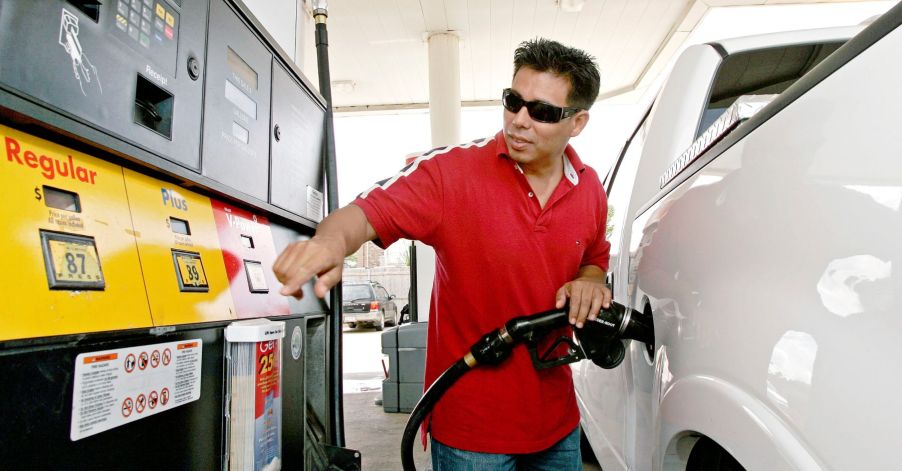
The EPA Finds That E15 Fuel Is Dangerous for 2001 Model Cars and Older
In recent years, the auto industry has introduced vehicles powered by new and alternative fuels. So, today’s gas stations have begun to look a bit different. Today, you may even see charging stations where you pump gas. You also might see E15 gasoline as an option on the pump, a type of fuel you may not be familiar with. While using E15 gasoline can have some benefits, you’ll want to avoid it if you drive a car manufactured before the 2001 model year.
What is E15 gasoline?
A type of 88-octane fuel, E15 gasoline contains a mixture of 85% unleaded gas and 15% ethanol. According to MotorTrend, it’s been available to consumers since 2012 and is also often referred to as Unleaded 88. It’s produced for consumers looking for a gasoline and ethanol fuel mix but unwilling to pay a premium for it.
E15 is a low-cost alternative to E85 gasoline, which blends unleaded gas with a much higher ethanol concentration- between 51% and 83%. It’s also an alternative to E10, which, per the Iowa Renewable Fuels Association, was the U.S. standard until 2009. E10, as its name suggests, only contains 10% ethanol, which was the maximum allowed under federal regulations. However, intense lobbying by the ethanol industry resulted in the U.S. Environmental Protection Agency (EPA) lifting that cap the following year.
So, E15 gasoline can be used in conventional gas-powered vehicles, with some exceptions. The U.S. Department of Energy notes E15 cannot be used in motorcycles, cars with heavy-duty engines, off-road vehicles, or off-road equipment. Still, E15 can be used safely in your typical sedan or SUV. However, there are some key differences between using ethanol-blended fuel and standard unleaded, which depending on your car’s age and design, may make E15 your best choice – or a terrible one.
Why E15 fuel is a bad choice for cars older than the 2001 model year
Consumer Reports, citing EPA guidance, notes that E15 is ideal for fuel-flexible (also known as flex-fuel) vehicles and vehicles made after the 2001 model year. In fact, most cars engineered after 2001 were designed to handle ethanol blends, though you’ll want to double-check your owner’s manual to ensure that E15 can be used safely.
However, vehicles manufactured before that year were designed with ethanol blends in mind. Ethanol blends burn hotter than pure gas blends. Because they burn hotter, there’s an increased risk of engine misfires in older engines. Because ethanol also tends to absorb moisture more efficiently than unleaded gasoline, E15 could corrode the components of older engines over time.
Car owners can avoid these issues by installing components specially designed to handle ethanol blends in older cars. However, doing so can be pricey. It’s safer to avoid pumping E15 into your 1997 Outback or 1996 Camry if you’ve still got yours on the road.
Why E15 may be a good choice for newer cars

Despite its risks to older cars, E15 may be a good choice for your newer car. Consumer Reports notes that, as E15 is a higher octane fuel, it reduces engine knock and helps your engine operate more efficiently. It’s also cheaper not only than E85 but also than standard unleaded gasoline. Furthermore, E15 burns not only hotter but also cleaner. Using E15 can reduce your vehicle’s emissions, which is great for the environment. However, on the flip side, growing corn for ethanol production is a carbon-intensive process.
Still, if you’re considering fueling your car with E15, you may have difficulty finding it. MotorTrend noted that as of fall 2021 – 10 years since the EPA allowed E15 to be sold on consumer vehicles – it could only be found at about 2,000 gas stations in the U.S. Meanwhile, MarketWatch notes that there are about 115,000 gas stations in the U.S. You may need the help of an app like GasBuddy or Pure Gas to track down the closest one that sells E15.
E15 also reduces fuel economy, which will offset any cost savings you may obtain from its cheaper price-per-gallon. You also should look closely at your owner’s manual even if you own a car made after 2001. While the EPA allowed E15 to be used in any car manufactured after 2001, many automakers did not start engineering their vehicles to be ethanol-safe according to internal standards until the EPA announcement. Depending on when your car was manufactured, your owner’s manual may note that your vehicle should only use E10 gas. Ignoring that notice could potentially result in a voided warranty.
Even given this, it’s generally a safe bet to use E15 with cars manufactured after 2001. However, avoid using it in vehicles older than that, or you could face serious problems.


